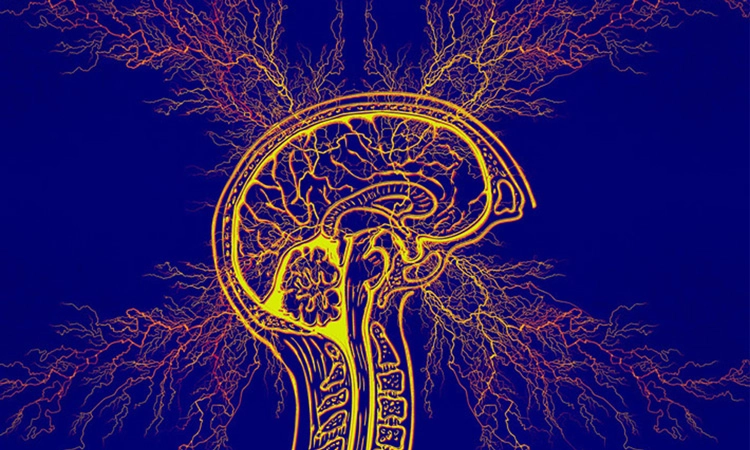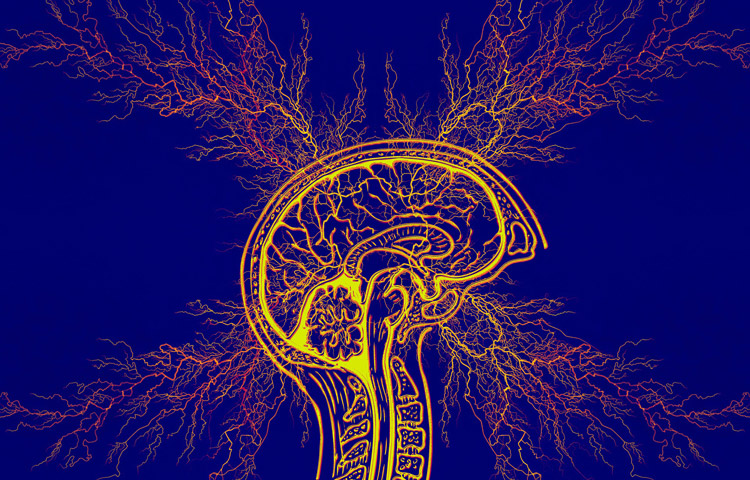Douglas Sheffler studies the many facets of addiction, including addiction to the nicotine found in tobacco products. Smoking continues to be the leading cause of preventable deaths in the United States, and the second leading cause of preventable deaths worldwide after hypertension (of which smoking is a risk factor).
With Nicholas Cosford, PhD, Sheffler, in collaboration with colleagues at UC San Diego and Camino Pharma LLC, a San Diego-based biotechnology company Cosford co-founded, are conducting clinical trials to advance an investigational drug called SBP-9330.
SBP-9330 targets a neuronal signaling pathway that underlies addictive behaviors, including tobacco use. If ultimately approved for market, it would be a first-in-class oral therapeutic to help people quit smoking.
“Our research suggests that SBP-9330’s mechanism of action—how it works—may also be effective for other types of addiction, such as cocaine, opioid and methamphetamine. In the future, we hope to explore and broaden the drug’s therapeutic uses.”
Prior to coming to Sanford Burnham Prebys in 2012 as a research assistant professor, Sheffler served in the same capacity at Vanderbilt University. He earned his PhD in biochemistry from Case Western Reserve University and his Bachelor of Science degree from Saint Vincent College.
Education
2005-2010: Post-doctoral Training, Vanderbilt University, Nashville, TN Mentor: Jeffrey Conn, PhD
1999-2005: PhD, Case Western Reserve University, Cleveland, OH Mentor: Bryan Roth, MD, PhD
Honors and Recognition
2013 NARSAD Young Investigator Award Brain and Behavior Research Foundation
Related Disease
Alzheimer’s Disease, Huntington’s Disease, Neurodegenerative and Neuromuscular Diseases, Neurological and Psychiatric Disorders, Schizophrenia
Dr. Sheffler joined the Sanford Burnham Prebys faculty in September 2012. Prior to this, he was a Research Assistant Professor at Vanderbilt University in the laboratory of P. Jeffrey Conn (2010-2012), where he also performed post-doctoral work (2006-2010). Dr. Sheffler has over 15 years’ experience in the study of G-protein coupled receptor (GPCR) signaling, assay development, high throughput screening for novel GPCR ligands, cell biology, neuroscience, and pharmacology. His interests are in the complex regulation of GPCRs: their signal transduction, ligand binding, receptor desensitization, and the processes of GPCR internalization and down-regulation. In addition, he has also has a specific interest in both the pharmacology of GPCRs, in general mechanisms of signal transduction, and in the pathogenesis of schizophrenia. During his graduate studies at Case Western Reserve University in the laboratory of Bryan L. Roth, MD, PhD, he discovered the regulation of 5-HT2A serotonin receptor signal transduction by p90 ribosomal S6 kinase (RSK2). During his post-doctoral studies and work as a Research Assistant Professor at Vanderbilt University, he focused on the discovery and characterization of orthosteric and allosteric modulators of GPCRs and led pharmacology efforts characterizing novel M1 muscarinic acetylcholine receptor agonists and antagonists, M1 positive allosteric modulators (PAMs), Glycine Transporter Type 1 (GlyT1) inhibitors, and novel Group II metabotropic glutamate receptor (mGlu) PAMs and NAMs. Dr. Sheffler’s research has resulted in more than 45 journal articles and is a listed inventor on five patent applications pertaining to small molecule therapeutics. Dr. Sheffler received a NARSAD Young Investigator Award in 2013 from the Brain and Behavior Research Foundation.
Douglas Sheffler’s Research Report
The metabotropic glutamate receptors (mGlus) are G protein-coupled receptors (GPCRs) that play numerous roles in modulating synaptic transmission and cell excitability. Recent preclinical and clinical studies provide strong evidence that agonists of the group II mGlus, comprised of the mGlu2 and mGlu3 subtypes, may provide a novel approach to treatment of schizophrenia and anxiety disorders. Based on this, there has been a major focus on understanding the roles of these receptors in regulating transmission in forebrain and limbic circuits. However, currently available orthosteric (glutamate site) agonists activate both mGlu2 and mGlu3 and do not provide insight into which subtype is most important for clinical efficacy. Alternatively, recent focus on compounds interacting with less highly conserved allosteric sites has led to advances in subtype selective compound development. Dr. Sheffler and others have discovered and characterized highly selective mGlu2 positive allosteric modulators (PAMs), that have no effect on mGlu3, and these compounds have allowed us to elucidate many of the physiological roles of mGlu2. These PAMs do not activate the receptor directly but act allosterically to potentiate glutamate responses. Dr. Sheffler and collaborators have also discovered group II mGlu negative allosteric modulators (NAMs) and have very recently discovered the first highly selective antagonist of mGlu3. The development of these pharmacological tools provides an opportunity to fully elucidate the roles of these mGlu subtypes. The group II mGlus play important roles in regulating transmission through the hippocampal formation. For example, activation of presynaptic group II mGlus reduces transmission at numerous hippocampal synapses including perforant path-dentate gyrus synapses and the mossy fiber synapse. In contrast, presynaptic group II mGlus are not involved in directly regulating transmission at the Schaffer collateral – CA1 (SC-CA1) synapse. However, we have previously reported extensive studies demonstrating group II mGlu involvement in a novel form of glial-neuronal communication in hippocampal area CA1. When coincidentally activated with β-adrenergic receptors (βARs) in astrocytes, group II mGlus induce a marked potentiation of cAMP responses elicited by activation of βARs. This synergistic increase in glial cAMP accumulation results in the release of adenosine, which activates presynaptic A1 adenosine receptors on neighboring SC terminals and induces a profound depression of transmission at the SC-CA1 synapse. This novel form of glial-neuronal signaling may provide a protective mechanism to reduce the risk of excitotoxicity when there is excessive excitatory drive to the hippocampus, such as during periods of intense or prolonged stress. This potential role has implications relevant for the therapeutic effects of group II mGlu agonists and is consistent with multiple studies suggesting group II mGlu agonists can reduce both acute and long term responses to stress. We have postulated that this effect is mediated by mGlu3 based on heavy expression of mGlu3 in hippocampal astrocytes. However, until now, selective reagents that differentiate between mGlu2 and mGlu3 have not been available to rigorously determine the specific group II mGlu subtype involved. The long term goal of Dr. Sheffler’s research is to establish the relative roles of individual group II mGlu subtypes in mediating glial-neuronal communication and modulating synaptic transmission in the hippocampus using pharmacological, biochemical, and electrophysiological approaches.
 Aug 2, 2024
Aug 2, 2024Sanford Burnham Prebys event explores the science behind addiction
Aug 2, 2024Scientists and clinicians from three local research institutions converged July 31 to discuss new ways to treat multiple addictions at…
 Jul 25, 2024
Jul 25, 2024The Science Behind Addiction
Jul 25, 2024Scientists and clinicians from three local research institutions converge July 31 to discuss new ways to treat multiple addictions at…
 Jul 17, 2024
Jul 17, 2024Sanford Burnham Prebys announces new faculty recruit and two faculty promotions
Jul 17, 2024Douglas Sheffler was named as a new associate professor at Sanford Burnham Prebys, while Cosimo Commisso and Nicholas Cosford garnered…
 Nov 8, 2023
Nov 8, 2023From tobacco to alcohol to opioids, Sanford Burnham Prebys researchers are pursuing novel leads and promising therapies to treat addiction
Nov 8, 2023Addiction is perhaps the most and least visible of public health crises in the US. Tens of millions of Americans…
